When discussing the “f-hole” or “violin” style soundholes Rickenbacker has applied to a number of semi-hollowbodied guitars over the years, there are two key things to understand: there are two possible “orientations” of the f-hole, and two corresponding templates used to cut said soundholes in the top of the guitar. Pictures explain it fairly clearly:
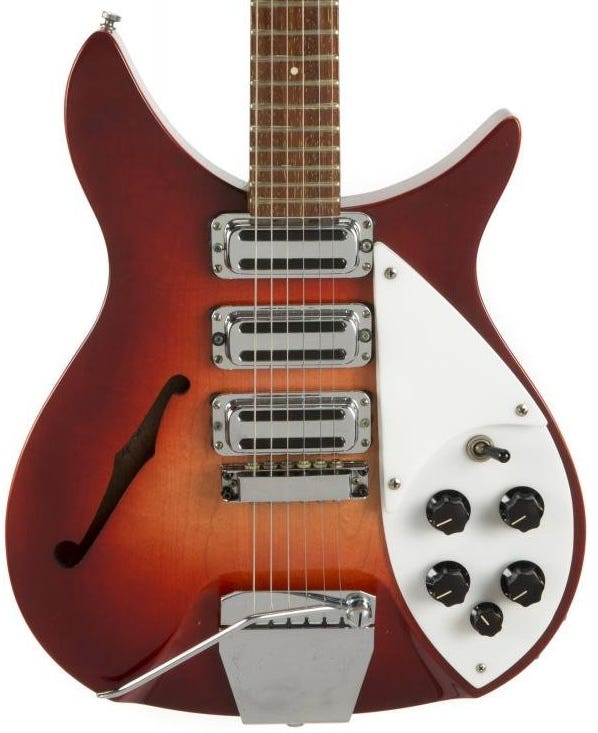
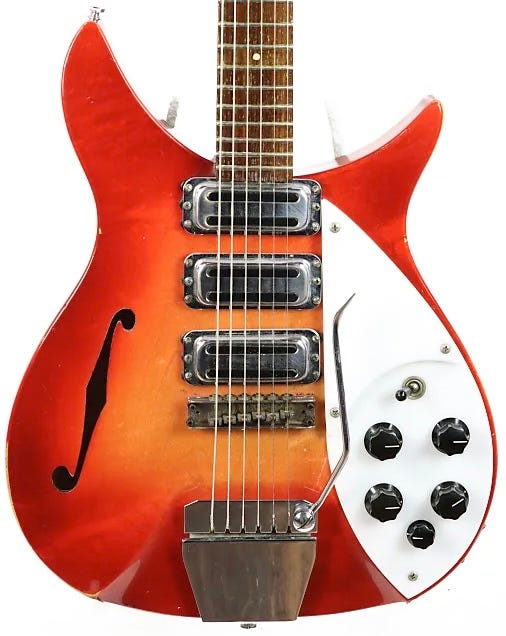
Above you will see two different Model 1996 guitars, both produced in 1964. From the introduction of the short-scale Capris in 1958 until mid 1964, all short-scale f-hole equipped guitars got the one on the left: the so-called “2 o’clock” f-hole.
When Rickenbacker began exporting guitars to UK distributor Rose Morris in 1964, they requested that all semi-hollow guitars receive an f-hole instead of the traditional Rickenbacker slash/cat’s eye soundhole.
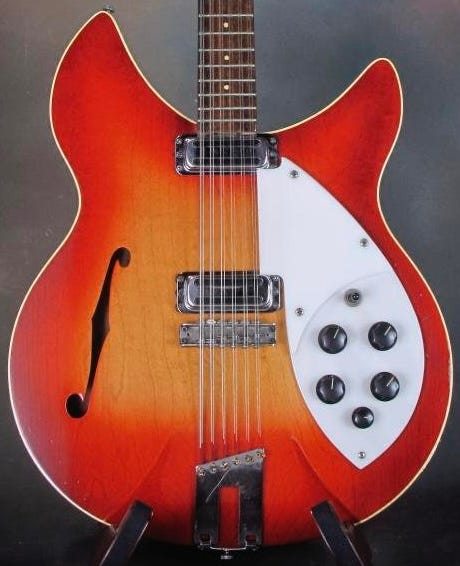
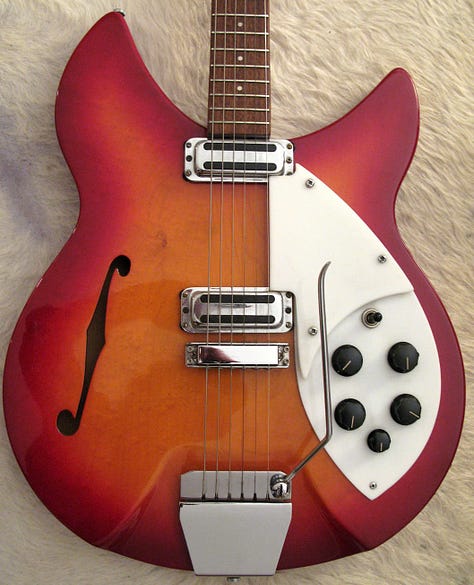
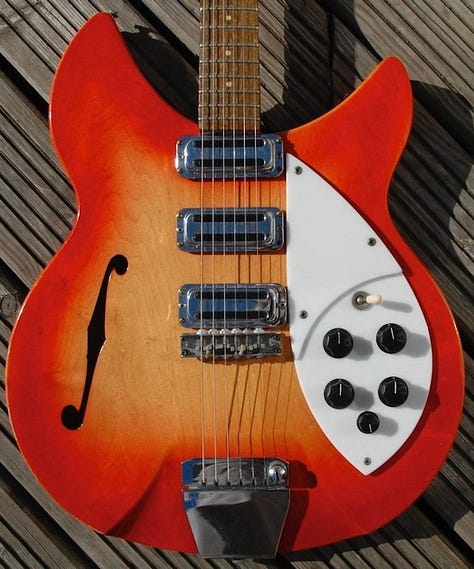
As you can see, the Models 1993, 1997, and 1998 above got a slightly different f-hole—the same as on the second 1996 above. This is the so called “1 o’clock” f-hole. That same f-hole was applied to the 1996 as well in mid 1964, and all standard f-holes since have been of this type—apart from reissues of earlier short-scale models.
If you’re wondering why they’re called “1 o’clock” and “2 o’clock”, think of the f-hole as the hands of a clock, with the top “arm” of the f-hole pointing to 1 or 2 o’clock. Simple, no?
But, there’s more of a difference than just the orientation. The 2 o’clock and 1 o’clock f-holes are actually of different shapes, with a different template used to create each. These pictures should make it clearer:


The top picture is the “2 o’clock” f-hole and the bottom is the 1 o’clock. Note the locations of the “points” in the middle, and their relationship to each other. On the “2 o’clock”, the “top” point comes before the “lower” point, and both points are not terribly well centered. Now look at the “1 o’clock” and note how the “bottom” point comes before the “top” point, and both points are fairly well centered. Now tell me what’s wrong with this 2011 1997 (apart from the fact that it’s a 21 fret guitar with a 24 fret pickguard):
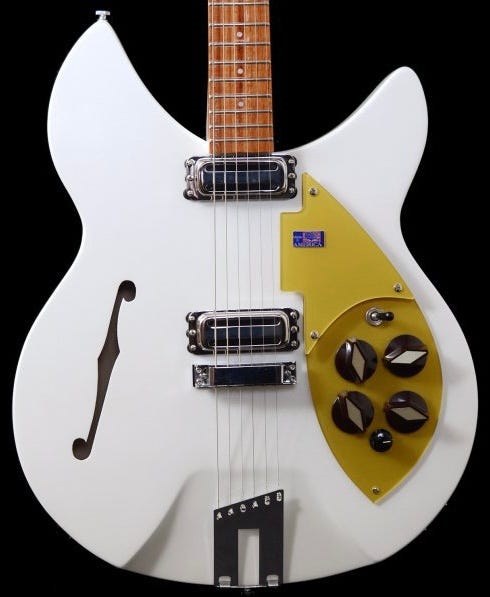
It’s a “2 o’clock” template in a “1 o’clock” orientation. And it just looks…wrong.
It was just sloppy work at the factory. And you often see aftermarket mods that get it wrong as well—although usually it happens in reverse: a “1 o’clock” template in a “2 o’clock” orientation. Is it a picky little detail? Sure. But once you see it, you can’t unsee it…
For more commonly used Rickenbacker lingo, check out the glossary of terms found HERE.



